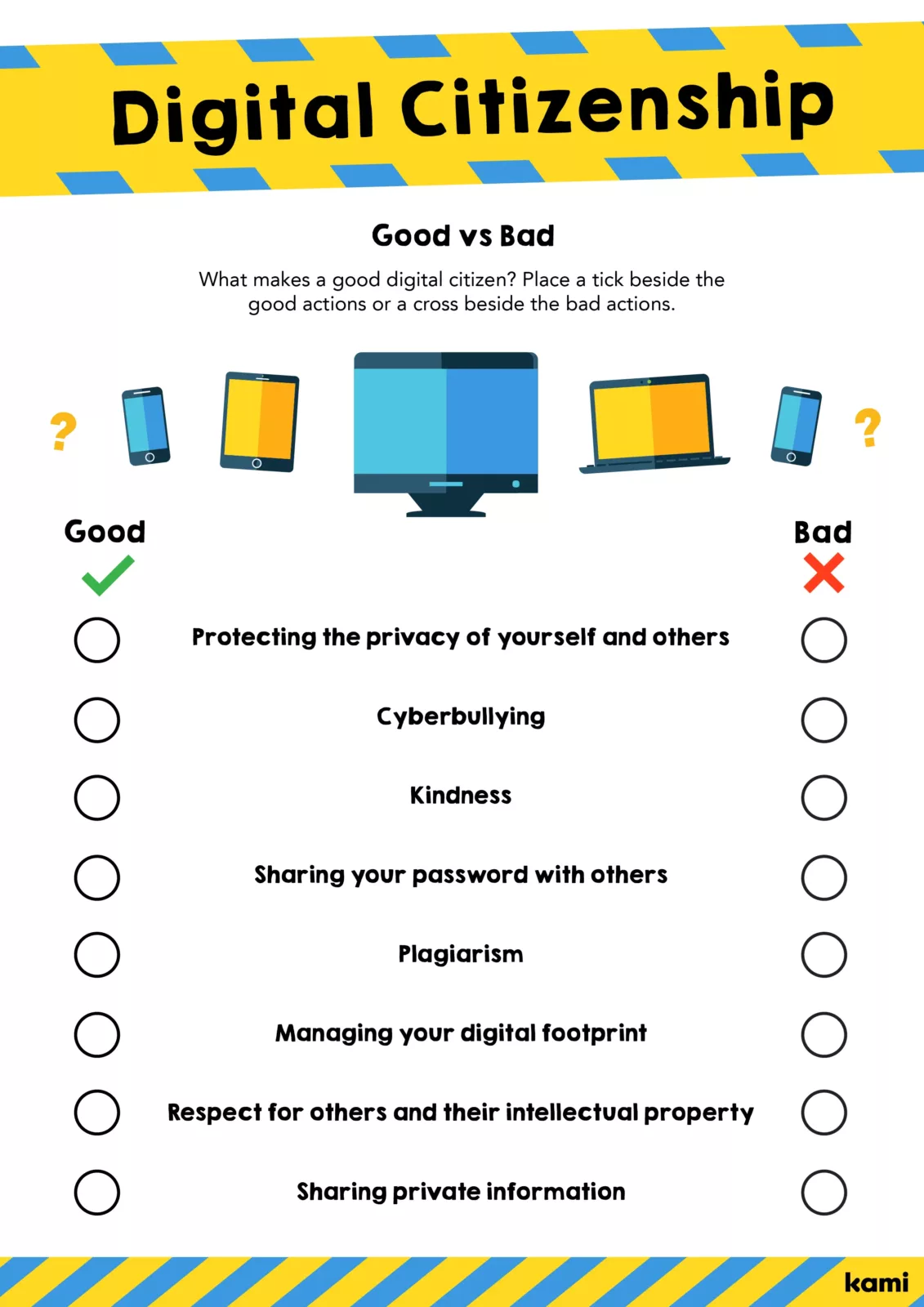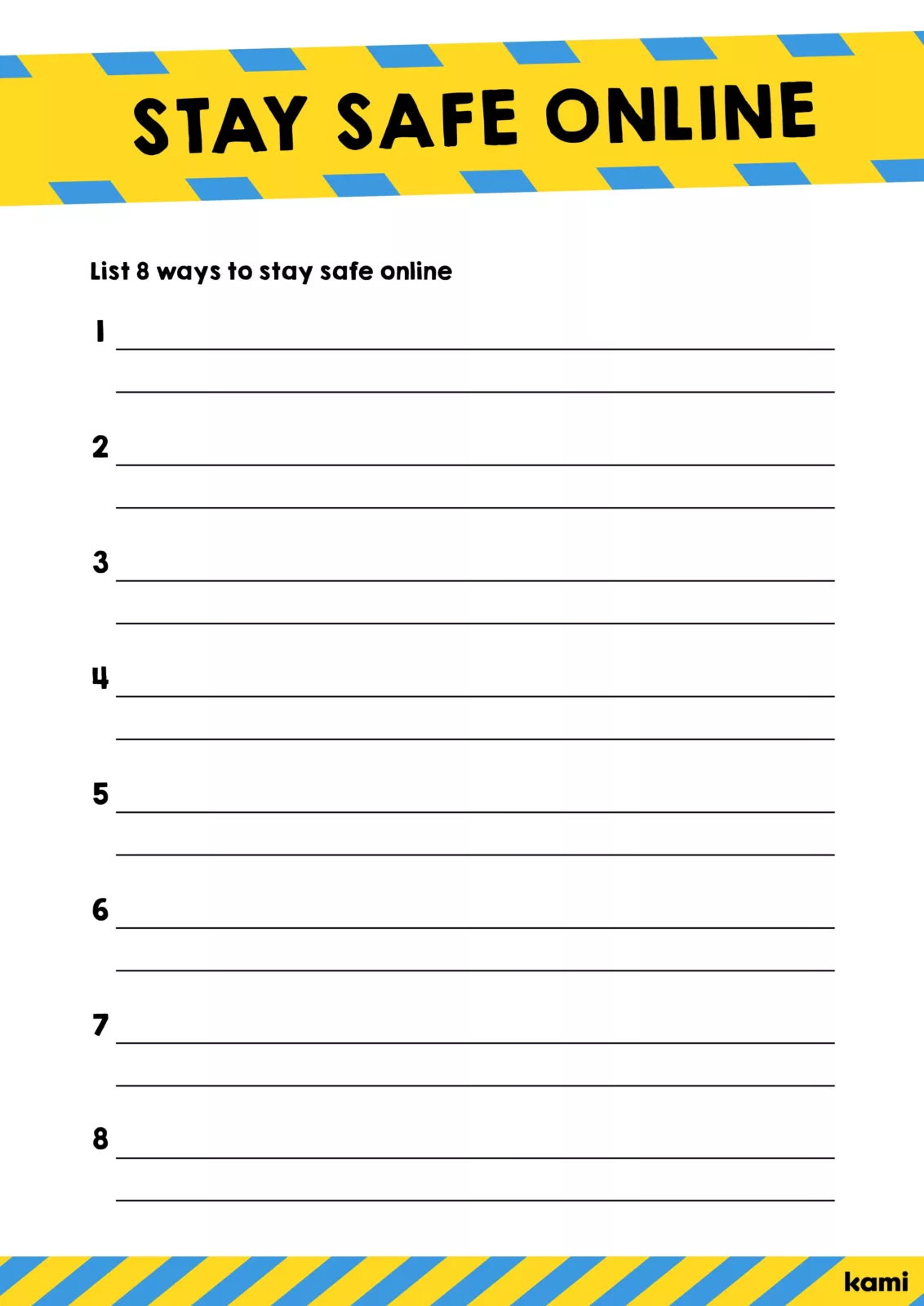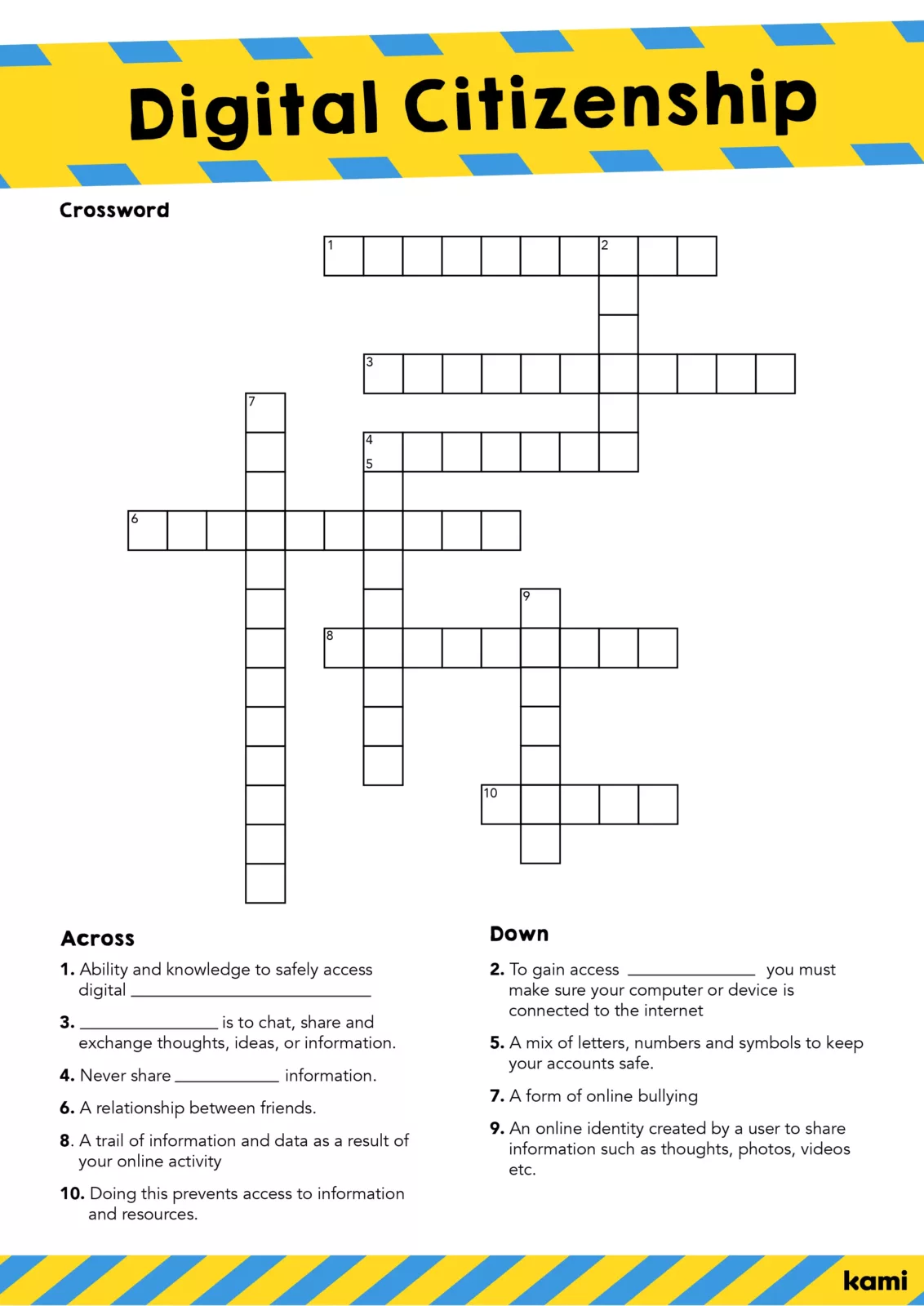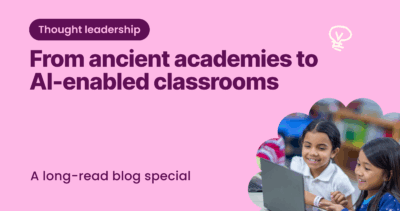
Shirin Bradfield
People are spending more time online than ever before. Social networking with friends; learning and working remotely; completing everyday tasks like shopping, banking, and paying the bills. We are inextricably linked with our devices – and so are our students.
The average tween (ages 8-12) spends about four hours and 44 minutes using screens each day outside of school and homework. For teens (13-18), this climbs to seven hours and 22 minutes.
Students aren’t only using the internet to learn, play and socialize, but to form their opinions and shape their real-world identity. Teaching digital citizenship in school can help our students develop the skills and learn the digital tools they need to participate safely in the online world and beyond.
Free Digital Citizenship Templates



Free download at the Kami Library
What is digital citizenship and why is it important for today’s learners?
Just as we’re citizens in the real world, we’re citizens of the online world too; there are essential standards, skills, and behaviors to good digital citizenship and responsible use of technology.
Teaching good digital citizenship is all about preparing learners to harness technology for good; using the internet to learn, participate and engage meaningfully; while also being mindful of safe and fair use of technology and minimizing harm online.
As the internet and its applications evolve, so does the concept of what it means to be a good citizen online. Elements of digital citizenship include:
- Balancing media consumption and well-being
- Privacy, security and internet safety
- Safe social media use, relationships and communication online
- Online etiquette or ‘netiquette,’ cyberbullying or hate speech
- Media and information literacy and identifying and evaluating information online.
Five tips for bringing digital citizenship into the classroom
While some elements of digital citizenship like plagiarism and information literacy lend themselves easily to the classroom, others may feel like a grey area for teachers: netiquette, scams, or teaching students how to deal with cyberbullying to protect their well-being online.
These five tips can help you work in an effective digital citizenship curriculum that resonates with learners and leaves them with real-world digital citizenship skills.
1. Design interactive digital citizenship lessons
Much of the online world is interactive, so make sure your digital citizenship lessons are too! Incorporating apps, games, videos, and platforms your students already use into your digital citizenship curriculum will help keep learners engaged and interested.
Common Sense Media and Education are great resources to help you when developing digital citizenship lessons. You’ll find thorough reviews of games, apps, and social media, including risks and recommendations for safe, best practice use.
2. Let students be the teacher
Technology is always rapidly changing; our students’ use of technology and digital tools will differ a lot from our own online habits. Take from your students’ real-world (online) experiences to shape your digital citizenship lessons.
For example, when teaching about online safety, ask learners to examine some of the safety features embedded in apps or games they use regularly. How do features like anonymous mode, minimum age requirements, and the ability to report inappropriate content help keep users safe online? Getting students to evaluate their experiences in the digital world will help them to reflect on their experience and what makes them good digital citizens.
3. Keep it real online
As students spend more time participating in digital media, the lines between the real and online world are beginning to blur. Young peoples’ identities are increasingly shaped by feedback and experiences they have virtually.
Social media is a key factor in this trend, with young people using platforms to expand their digital footprint, socialize with peers and strangers alike, and form opinions of themselves and others. While this can have negative effects—the risk of online harassment and issues relating to self-image—online engagement can also provide a platform for learners to advocate for social justice issues and learn about other cultures!
As teachers, it’s important to remind students to keep it real online. Reinforce that their digital footprint or online persona is permanent, and teach them about the importance of coping with the pressure of ‘likes’ and the ‘always on’ nature of the internet.
4. Don’t teach digital citizenship in a silo
While the ICT classroom may seem like the most appropriate place to teach digital citizenship lessons, elements of digital citizenship relate to any curriculum where learning or schoolwork takes place online. So how can you build digital citizenship into your lesson plans?
Start your next research project with a mini lesson on information literacy. Have students spend some time evaluating the search engine results for their designated research topic, asking them to consider:
How you evaluate the credibility and transparency of a website or online content? What are indicators of reliable online content? What might indicate content that is less reliable?
How might online advertising affect a website’s credibility? How can you identify commercial content?
How do different search terms and strategies ensure search engine results are relevant and accurate?
Bringing digital citizenship into everyday learning will help students develop their digital literacy skills and become more aware!
5. Leverage digital life dilemmas as real-world teaching tools
By the time they enter your classroom, students will have already had dozens of formative experiences online; some of which may have been hurtful, upsetting, or confusing. As the ongoing pandemic forces students to spend more time online, there is a heightened risk that they will encounter some forms of upsetting content, cyberbullying, and harassment.
Common Sense Education research refers to these as ‘digital dilemmas‘, and as students go through high school, the types of dilemmas they face online become more complex. While it may be uncomfortable at first; asking your students about their own digital life dilemmas can be a powerful moment that leads to valuable conversations about wellness, friendships, relationships, engagement in civic life, and social justice issues.
Remember – virtual experiences can have a very real impact on your students’ lives offline. Encourage them to talk to their parents or a trusted adult if they are feeling affected by negative experiences in the online world, and remind them that you are there to listen and provide support!
You may also like

From ancient academies to AI-enabled classrooms

Improving AI literacy in American schools

